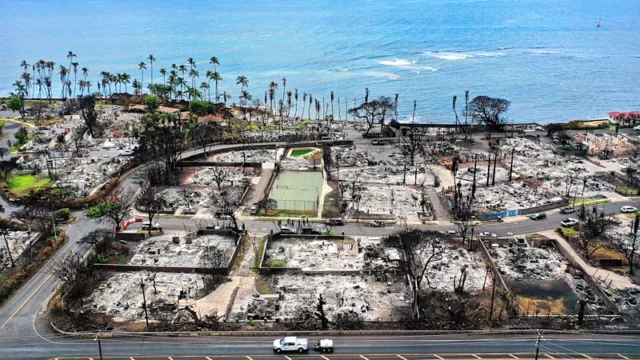How Soon Is Too Soon to Visit After a Disaster?
As natural disasters like floods, storms, and wildfires become more frequent and severe, many travelers face a difficult decision: when is it appropriate to visit a destination recovering from such devastation? Understanding the impact on local communities and gauging the right time to visit can make a significant difference. Here are some key considerations to keep in mind when planning a trip to a disaster-affected area.
The Growing Impact of Climate Change on Travel
Rising Frequency of Natural Disasters
This summer has seen a surge in natural disasters, from wildfires raging across landscapes to storms breaking records. As the climate crisis intensifies, experts warn that these extreme weather events—floods, fires, hurricanes, and tornadoes—will only increase in frequency and severity. Cities around the world are searching for ways to mitigate the impact of climate change, from creating more green spaces to reduce urban heatwaves to investing in advanced flood prevention technologies.
The New Normal for Travelers
As these threats become more common, travelers must become more informed about not just when it is safe to visit after a disaster, but also when it is considerate and responsible. Making the right decision requires understanding the local situation and assessing how your visit might affect or benefit the community.
Supporting the Local Community Post-Disaster
Economic Contribution or Burden?
In the aftermath of Hurricane Maria, which devastated Puerto Rico in 2017, officials reopened the island to tourists just three months after the storm. While this move was aimed at revitalizing the economy, many locals, who were still without basic services like electricity and running water, felt a sense of resentment toward the influx of visitors.
Mikey Cordero, an activist and co-founder of the Defend Puerto Rico Media Collective, described the frustration: “Visitors were enjoying the island while locals were struggling with daily life. The tourism dollars weren’t reaching the people who needed them most.” Cordero emphasizes the importance of ensuring that both government policies and tourists themselves contribute directly to the recovery efforts of the local community.
Choosing to Support Local Businesses
In regions like the Caribbean, where all-inclusive resorts and cruise ships dominate the tourism landscape, it’s crucial for travelers to make conscious choices. Opting to stay at locally owned hotels, shop from local vendors, and dine at local restaurants can make a tangible difference in supporting the community during its recovery.
Being a Responsible Tourist: Helping vs. Spectating
The Problem with Disaster Tourism
After Hurricane Katrina struck New Orleans in 2005, killing nearly 1,400 residents and destroying countless homes, a new form of tourism emerged. Katrina tours, which showcased the devastation to curious visitors, sparked controversy among locals. “Seeing tourists gawking at the destruction while we were still trying to clean up was disheartening,” recalled Jason Bradberry, a longtime resident of the city.
In response to public outcry, the city eventually banned tours of the Lower Ninth Ward, one of the hardest-hit areas. Kelly Schultz, senior vice president of communications for the New Orleans tourism bureau, explained, “No one wants to be cleaning out the remnants of their home only to have a tour bus drive by.”
The Positive Impact of Voluntourism
Despite the controversy, the disaster also brought a wave of “voluntourists” to New Orleans—visitors who came specifically to help rebuild the community. Schultz shared her experience, noting, “We had college students who spent their spring break helping to clean out homes instead of going to the beach. It was physically and emotionally taxing, but their efforts made a huge difference.”
Voluntourism can play a crucial role in a community’s recovery. For example, organizations like the Red Cross and Habitat for Humanity offer volunteer opportunities for both locals and visitors, helping communities rebuild after disasters like the 2021 flooding in Kentucky and the tornadoes that hit the Midwest in 2023.
Listening to Local Voices: When to Return
The Case of Maui’s Wildfires
In 2023, wildfires devastated the island of Maui in Hawaii, particularly the historic community of Lāhainā. In response, Hawaii’s governor called for an evacuation of tourists and a temporary halt on incoming visitors to focus resources on the residents who needed them most.
This moratorium on travel lasted about a week, after which tourism was gradually reintroduced. According to Ilihia Gionson, public affairs officer at the Hawaii Tourism Authority, the key to a successful reopening was involving locals in the decision-making process. “We conducted a rapid needs assessment with disaster survivors to understand their priorities, and it became clear that we needed to restore tourism to support the local economy,” Gionson explained.
Respecting Local Recovery Efforts
As tourism resumed, officials made sure that devastated neighborhoods were off-limits to tourists, encouraging visitors to support the community in other ways. This locals-first approach was well-received by both residents and tourists, with many visitors contributing to recovery efforts through donations and volunteer work.
The clear communication and respect for local needs helped to ensure that tourism’s return was beneficial rather than exploitative. “In Maui’s hour of need, the outpouring of support from around the world was heartwarming,” Gionson noted.
Conclusion: Timing Your Visit After a Disaster
Guidelines for Travelers
Determining when it’s appropriate to visit a destination recovering from a disaster is not always straightforward. The key factors include honest communication from local officials about the situation on the ground and a commitment from visitors to respect and support the affected community.
Tourism can play a vital role in a community’s recovery, but it must not overshadow the needs of the people who are still healing from the trauma. As Gionson pointed out, “Restoring economic activity is important, but it cannot outpace the recovery of the people themselves.”
By carefully considering these factors, travelers can ensure that their visit is both safe and supportive, helping to foster a meaningful recovery for the destinations they love.











